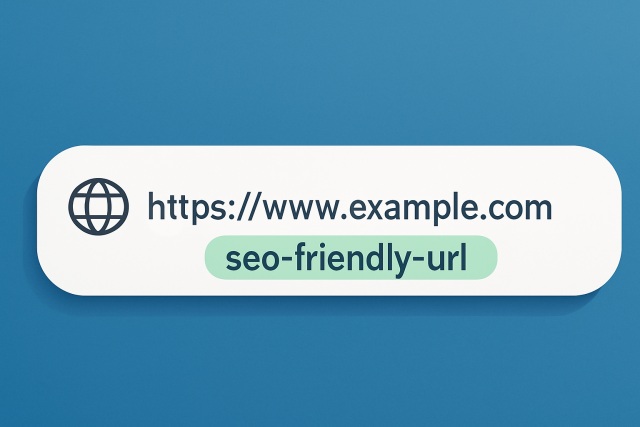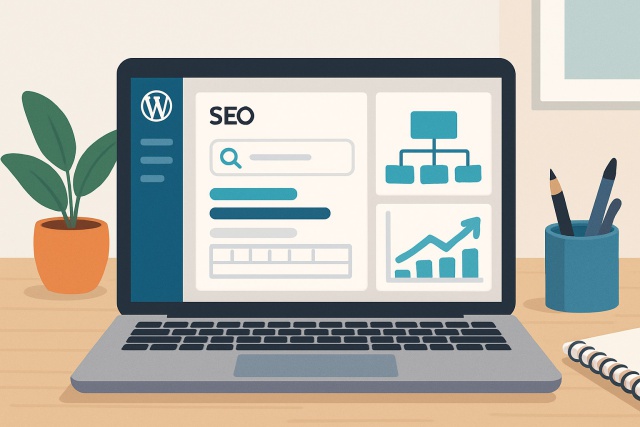SEO For Ecommerce Site - Steps To Increase Product Visibility


SEO is absolutely key for any ecommerce business because getting your products noticed on search engines usually means more visitors and higher sales. It also helps create a brand that sticks in people's minds. Ecommerce stores often face fierce competition and site structures that can feel like navigating a maze.
A Closer Look at SEO for Ecommerce Sites
Ecommerce SEO is all about fine-tuning an online store so its products show up higher in search engine results and attract visitors ready to buy. It covers the technical side like boosting site speed and ensuring search engines can crawl your pages easily. It also includes on-page SEO with carefully crafted product titles and descriptions that speak to buyers. Then there’s off-page SEO which usually means building backlinks to boost your site’s credibility. Unlike traditional SEO that focuses on informational content, ecommerce SEO targets transactional searches based on the user’s intent to make a purchase.
Step 1 Dive into Keyword Research That Really Zeros In on Buyer Intent
Picking the right keywords is absolutely important for nailing ecommerce success. These keywords need to line up perfectly with what buyers have in mind, especially for transactional or commercial searches where people are gearing up to make a purchase. I’ve found that keyword research tools can shed light on product-related terms, uncover competitive keywords and give you the lowdown on search volumes.
- Zero in on those long-tail keywords that really spotlight specific products or features because they tend to reel in buyers who are much more likely to convert. It’s like fishing where the fish are biting.
- Take a good hard look at your competitors’ keywords to uncover gaps and sniff out fresh opportunities in your market—sometimes the treasure is hiding in plain sight.
- Round up your keywords by product category to keep your content neat and give your site’s structure a solid boost.
- Focus on terms loaded with transactional or commercial intent. Think words like "buy," "discount" or "best price" to zero in on visitors who’ve already got their wallets half out and are itching to make a purchase.
Step 2 Making Product Pages Work Well for Both Search Engines and Shoppers because hitting that sweet spot is where the magic really happens
Product pages are the heart and soul of your ecommerce SEO strategy. Snag those coveted high rankings and turn casual visitors into loyal buyers by carefully tweaking every detail. Titles, descriptions, images, URLs and meta tags all deserve your attention. When done right, a well-rounded optimization helps search engines understand your product and creates a smooth, enjoyable experience for your customers.
- Create engaging product titles that work in your target keywords without turning them into a cluttered mess.
- Craft unique detailed descriptions that highlight benefits and features while tackling customer concerns head-on.
- Optimize images by trimming file sizes, adding clear alt text and picking file names that make sense.
- Keep URLs tidy and packed with relevant keywords to accurately reflect product categories and names so they’re easy to follow.
- Use schema markup to boost rich snippets and provide well-structured data search engines will appreciate.

Visual guide showing key SEO components of an optimized ecommerce product page
Step 3 Organizing the Ecommerce Site to Make Life Easier for Search Engines Crawling It
Having a clear site structure is absolutely vital if you want both search engines and users to track down products without banging their heads against the wall. When you group categories in a logical way and pair that with some savvy internal linking, you’re making sure those key pages don’t get lost in the shuffle. This not only helps them pop up more easily during crawls but also plays a big role in boosting indexation and rankings
- Set up a silo structure that neatly organizes related products into clear categories to make it easy for visitors to find what they are after.
- Add breadcrumb navigation to boost the user experience and sprinkle in some extra internal linking magic.
- Keep category layers shallow so users can reach products within a few clicks from the homepage. No one likes getting lost down endless rabbit holes.
- Link from reputable blog or resource pages to related products to spread link authority and give your traffic a gentle nudge in the right direction.
Step 4 Giving Your Site a Speed Boost and Making Mobile Users Feel Right at Home
Pages that load in a snap and designs that play nicely on mobile devices are absolutely vital for rankings and have a big say in how happy users are and whether they actually stick around to buy something.
- Compress and optimize images with a careful hand to keep that crisp quality intact, all while trimming down those pesky page load times.
- Use browser caching to speed up repeat visits, so your users feel like they’re coming back to a well-oiled machine.
- Minimize and delay the loading of JavaScript and CSS files just enough to dodge any page rendering hiccups.
- Embrace responsive web design to ensure your product pages glide effortlessly across any device screen, no matter the size.
- Consider giving AMP (Accelerated Mobile Pages) a whirl for your key product pages—it’s a nifty trick to boost mobile loading speed and keep individuals happy on the go.
"Page speed and mobile usability are not just some fancy extras you can ignore. They actually hold a lot of weight when it comes to ecommerce rankings and have a real, tangible impact on how buyers behave and, naturally, how much you sell. Focusing your efforts here often pays off with noticeable bumps in conversion rates—kind of like finding a little secret sauce for your online success." – Search Engine Journal
Step 5 Making the Most of Customer Reviews and User-Generated Content because sometimes, your best marketing individuals are actually your customers themselves.
Customer reviews and other user-generated content bring fresh unique perspectives to product pages. This really helps build trust and signals to search engines that the page actually matters.
- Encourage verified buyers to share their honest reviews because it’s the best way to boost authenticity and build real trust.
- Make it a point to respond quickly to customer feedback since it shows you’re truly engaged and genuinely care about making things better.
- Use schema markup for review snippets so your ratings really stand out in search results, catching eyes without being too flashy.
- Include Q&A sections where users can ask questions and get answers right on the product pages to make the whole experience smoother and a bit more personal.
Step 6 Building Supporting Content to Attract Traffic and Establish Authority because a solid foundation never goes out of style
Beyond product pages content like blogs, buying guides and how-tos really help cast a wider net. They cover more keywords, catch individuals who are on the hunt for info and quietly beef up the site’s authority.
- Whip up detailed product comparisons that really help buyers cut through the noise and make smart choices.
- Share practical tips and easy-to-follow tutorials that highlight product benefits and get people engaged.
- Craft articles about industry trends to position your store as the go-to, trusted expert.
- Shine a spotlight on customer stories and heartfelt testimonials to build genuine trust and authenticity.
- Put together seasonal or holiday gift guides that perfectly capture your products’ relevance when it matters most.
Step 7 Keeping a Close Eye on Performance and Tweaking Your SEO Game Along the Way
SEO for ecommerce sites is a never-ending journey that calls for regular check-ins and some fine-tuning along the way. Tools like analytics and search consoles are your trusty sidekicks helping you monitor how product pages perform, catch hiccups early, and adjust your game plan to boost visibility and turn visits into conversions over time.
- Keep a close watch on keyword rankings to see how your pages measure up against the competition. It’s a bit like keeping your finger on the pulse.
- Pay attention to click-through rates so you can tweak titles and meta descriptions to better catch eyeballs and boost engagement.
- Dive into bounce rates and user behavior on your product pages because this is often where you can find golden opportunities to make the user experience smoother and more inviting.
- Make it a habit to run regular site audits. These help you find pesky crawl errors or broken links before they become bigger headaches.
- Give outdated product descriptions and content a fresh spin now and then to keep things relevant and appealing for your visitors and the search engines.
Unlock Digital Marketing Success with Moz
Struggling to optimize your online presence? Moz is the ultimate Internet Marketing solution, empowering businesses with powerful SEO tools, insightful analytics, and expert guidance. Elevate your digital strategies and outshine the competition.
- Boost organic traffic with data-driven SEO tactics
- Enhance content marketing with expert recommendations
- Gain a competitive edge with comprehensive link analysis







